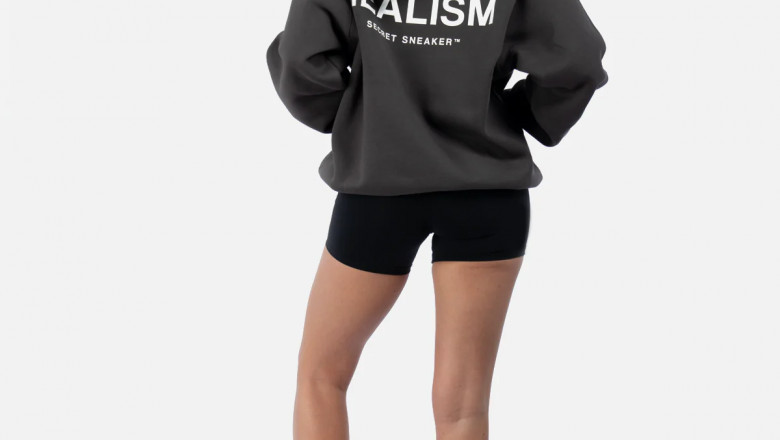views
Realism Clothing: A Detailed Exploration of Its Meaning, Impact, and Aesthetic
Fashion, like any form of artistic expression, goes through evolving phases that reflect the values, ideals, and cultural consciousness of its time. One such movement gaining traction in recent years is Realism clothing. Drawing influence from the broader artistic tradition of Realism, this fashion trend emphasizes authenticity, simplicity, and the unembellished depiction of life. In a world increasingly dominated by virtual filters, fast fashion, and exaggerated aesthetics, Realism clothing offers a grounded, honest alternative rooted in functionality, minimalism, and emotional resonance.
Origins of Realism in Art and Its Influence on Fashion
To understand Realism clothing, it is essential to first consider the origins of Realism in art. The Realism movement emerged in the mid-19th century as a reaction to Romanticism, which often dramatized and idealized life. Realist artists like Gustave Courbet and Jean-François Millet aimed to depict everyday life and ordinary people with accuracy and truthfulness, avoiding embellishment or fantasy.
This ideology soon permeated other creative spheres, including literature, film, and, more recently, fashion. Realism in clothing reflects this same dedication to truth and unfiltered representation. Rather than showcasing aspirational or theatrical styles, it focuses on what people actually wear in their daily lives, emphasizing utility, comfort, and the beauty found in simplicity.
Characteristics of Realism Clothing
Realism clothing can be understood not merely as a style but as an ethos. It prioritizes:
1. Simplicity and Functionality
Realism fashion celebrates simple silhouettes, neutral tones, and garments made for actual wearability. The designs often avoid unnecessary adornments or complex structures. Think of plain cotton shirts, woolen trousers, utilitarian jackets, and sturdy boots. These items are chosen not for flamboyance but for their timeless and practical qualities.
2. Authenticity Over Glamour
Whereas some fashion trends are driven by the desire to stand out or shock, Realism clothing aims to reflect reality. Clothes are worn as they are, not overly styled or manipulated. There is often an intentional embrace of imperfections, such as visible stitching, natural creases, or the aging of fabric over time.
3. Muted and Earthy Color Palettes
Realism fashion typically favors colors that mirror the natural world: beige, olive green, charcoal gray, navy, and shades of brown. These hues are unobtrusive and evoke a sense of groundedness, aligning with the movement’s core principles.
4. Durable Materials
Instead of synthetic fabrics that cater to fleeting trends, Realism clothing often employs natural, sustainable materials like cotton, wool, denim, and linen. These materials not only last longer but also age gracefully, telling the story of their use.
5. Workwear and Everyday Inspiration
There is a heavy influence from workwear, military uniforms, and peasant attire. These sources of inspiration stem from clothes worn in real, functional contexts. Carhartt jackets, denim overalls, fisherman's sweaters, and chore coats are examples of pieces that bridge utility and style in a Realist fashion.
Realism Clothing and Slow Fashion
Realism clothing shares a strong bond with the slow fashion movement. Both advocate for conscious consumption, ethical production, and sustainability. By choosing garments that are meant to last and be worn often, Realism clothing pushes back against the rapid turnover of fast fashion and the waste it generates. The focus is on quality over quantity—owning fewer, better-made pieces that serve a purpose.
Designers within this niche often produce small, limited-run collections or embrace made-to-order models to reduce overproduction. Brands like Margaret Howell, Lemaire, and TOAST embody these principles with their understated designs, muted colors, and emphasis on craftsmanship.
Emotional and Cultural Significance
Beyond aesthetics, Realism hoodie holds emotional and philosophical significance. It connects the wearer to a sense of humility and mindfulness. Clothing becomes not an identity performance but an extension of real life—what one wears to work, to run errands, or to spend time with family.
This emotional honesty can be particularly impactful in a digital era where curated perfection dominates social media. Realism clothing offers an antidote to the pressure of constant self-branding. It permits people to exist in their clothes, rather than feel they must perform in them.
Culturally, this movement often aligns with values like localism, environmentalism, and social responsibility. Realist fashion tends to favor local production, fair labor, and support for artisans, fostering a more ethical industry model.
Realism Clothing in Contemporary Media and Culture
While not always labeled explicitly as "Realism clothing," the aesthetic is increasingly visible in pop culture. TV series like The Bear or Normal People feature protagonists who wear unassuming, lived-in clothing that resonates with audiences for its relatability. These portrayals contribute to the growing appreciation for fashion that reflects everyday realities rather than constructed fantasies.
Additionally, social media influencers and fashion content creators who focus on minimalist wardrobes, capsule collections, and sustainable choices are effectively promoting the Realist fashion mindset, albeit often without using the term directly.
Critiques and Challenges
Despite its virtues, Realism clothing is not immune to critique. Some argue that in its pursuit of neutrality and simplicity, it can become monotonous or elitist, accessible mainly to those who can afford high-quality basics. Furthermore, the aesthetic's anti-trend nature may inadvertently become its own kind of trend, susceptible to co-option by mainstream fashion houses seeking to appear ethical or grounded.
Nonetheless, these critiques highlight the complexity of fashion as both art and commerce, and underscore the importance of critical engagement with the clothing we wear.
Conclusion
Realism clothing is more than a trend—it is a philosophy that reflects a desire for truth, substance, and sustainability in how we dress. In a consumer culture saturated with overstatement and spectacle, it re-centers fashion around authenticity and purpose. With its roots in everyday life and its eyes on a more conscious future, Realism clothing invites us to find beauty not in extravagance, but in the honest fabric of the real world.














Comments
0 comment